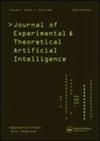一种基于mlcp的紧凑投影递归神经网络模型求解最短路径问题
IF 1.7
4区 计算机科学
Q3 COMPUTER SCIENCE, ARTIFICIAL INTELLIGENCE
Journal of Experimental & Theoretical Artificial Intelligence
Pub Date : 2022-04-21
DOI:10.1080/0952813X.2022.2067247
引用次数: 0
摘要
提出了一种投影递归神经网络(RNN)来求解最短路径问题(SPP)。本文的重点是给出一个紧凑的单层结构RNN模型来解决SPP问题,我们利用混合线性互补问题(MLCP)来表示RNN模型。此外,还证明了所开发的RNN具有全局稳定性。最后,通过数值仿真验证了该方法的有效性。我们将结果与其他方法进行了比较。本文章由计算机程序翻译,如有差异,请以英文原文为准。
A compact MLCP-based projection recurrent neural network model to solve shortest path problem
ABSTRACT We develop a projection recurrent neural network (RNN) to obtain the solution of the shortest path problem (SPP). Our focus on the paper is to give a compact single-layer structure RNN model to solve the SPP. To present the RNN model, we utilise a mixed linear complementarity problem (MLCP). Moreover, the developed RNN is proved to be globally stable. Finally, some numerical simulations are stated to show the performance of the presented approach. We compare the results with some other methods.
求助全文
通过发布文献求助,成功后即可免费获取论文全文。
去求助
来源期刊
CiteScore
6.10
自引率
4.50%
发文量
89
审稿时长
>12 weeks
期刊介绍:
Journal of Experimental & Theoretical Artificial Intelligence (JETAI) is a world leading journal dedicated to publishing high quality, rigorously reviewed, original papers in artificial intelligence (AI) research.
The journal features work in all subfields of AI research and accepts both theoretical and applied research. Topics covered include, but are not limited to, the following:
• cognitive science
• games
• learning
• knowledge representation
• memory and neural system modelling
• perception
• problem-solving

 求助内容:
求助内容: 应助结果提醒方式:
应助结果提醒方式:


